Ruaha National Park
Ruaha national park is the second largest park in Tanzania with an area of about 20.226 sq km. This magnificent park is located in south-central Tanzania the unique position which makes it uninterrupted, untouched and pristine Ecosystem, which in today world is not only something rare, but also very special.
Not only does Ruaha enjoys abundant wildlife, but the magnificent, and constant changing landscapes, add a magical touch to whole experience. Baobabs dot the rocky hillsides, the cool green shade, along the River, the open grassy plains, all make for a wonderfully varied and exciting trip.
During the dry season, Ruaha national park is on its best, animals are drawn to the Great Ruaha River and other water sources. The sand rivers (Mwagusi and the Mdonya rivers among others) which are now dry, have underground water reserves that the elephants know about, so often one can see the elephants digging holes to obtain this sweet water, which is also used by other creatures.
In the rainy season, it is green and lush, and very beautiful with full rivers. At the end of the rainy season the park looks magnificent in it new cloak of grass and leaves with amazing flowers of all descriptions, yellow daisies, pink cleome, and huge swathes of brightly colored ipomoeas and hibiscus grace the landscapes. The seasonal variations in the park are superb; it would be wise to visit more than once, so that you can experience the vast changes that occur.
The Activities
Although the main activity in Ruaha national park is the day game drives but there are other various game viewing activities which can be done to give visitors the best African wildlife safari experiences.
Day Game Drives: This is conducted during the day time and it is the best during dry season from June to October when animals gather in the remaining water sources. The common animals that can be seen in Ruaha national park include Elephants, buffaloes, zebra, lions, leopards, gazelles, giraffes, greater kudu, roan antelopes, sable antelopes and many more.
Other game activities includes bush meals, bird watching, start gazing balloon safari and picnicking.
Walking Safaris (short and long): Ruaha National park offers a range of walking safari which range from one hour to several hours depends with the purpose of the tour.
Night Game Drive: Ruaha national park offers a brilliant night game drives experience which enables you to see nocturnal animals which cannot see during day game drive. During the night game drive you will be accompanied by an armed ranger and carry the spotlight torches that you will use to spot the animals. The role of the armed ranger is to ensure your safety and security. The common nocturnal animals in Ruaha National Park include Bat eared foxes, African genet, porcupines, bush babies and many more. During the night game drive you will also escorted by the park ranger.
Bird watching: Ruaha national park is among the top destination for bird watching in Tanzania with over 450 bird species recorded. While in Ruaha visitors can see both residents and migratory bird species. The migratory birds use to migrate from Europe and northern part Africa and can be seen in Ruaha national park from November to April. A guided bird watching activity can be done early morning in the bush and the areas surrounding the lodge when most birds are still active. The bird species that can be observed include crested barbet, bateleur, goliath heron, African fish eagle, namaqua dove, Tanzanian red billed hornbill, ashy starling, white bellied go away bird, yellow collared lovebird, giant kingfisher , collared palm thrush, spur winged goose, African hawk, racket tailed roller, green wood hoopoe pels fishing owl among others.
The History of Ruaha National Park
Ruaha national park history go back to the slave trade time when the slave route cutting through the middle of it. The Arab trading caravans began using this route during the early 19th century. By 1830 these coastal traders began travelling on routes further north of the park, following a route through what is now known as Dodoma. Subsequently these routes were also used by Burton and Speke (1857 – 58) and other early European explorers.
In 1886 Tanzania came under German administration and was known as German East Africa. The Wahehe people led by the famous Chief Mkwawa was dominant tribe around the Ruaha area. He ruled a significant area from njombe in the south, to Kilosa and Mpwapwa in the north, and from Ruaha River to the Kilombero. These people were infamous for their fierce and successful battle tactics against the German occupiers. However, after many battles in 1894, Chief Mkwawa was forced into hiding, but undeterred, continued his guerilla war for another four years. Many of this hiding spots are thought to have been in what is now Ruaha National Park. In 1898, the Germans were finally able to overthrow his rule, but the legend of this great chief lives on, his secrets still reside amongst this ancient unspoiled land.
It was during the German occupation in 1910 that part of what is now the park was made into Saba Game Reserve. Later in 1946, the British declared that this area be extended and was called Rungwe Game Reserve. Finally in 1964 the southern portion of this reserve was declared the Ruaha National Park and in 1974 a small section to the south East of the Great Ruaha River was added. Finally in 2008, the park was enlarged to include the Usangu wetland which complete the boundaries that exist today. In addition to this, Ruaha nationa park is fortunate to be almost surrounded, by game reserves, so the whole ecosystem, is a vast, virtually untouched, wilderness area of more than 45, 000 sq km ( an area large than Denmark).
ds.
The Climate
Ruaha National park enjoys only one rainy season, usually from the end of November to May. The average rainfall in Ruaha varies from 500 mm around the Msembe HQ area in the Rift Valley, to 800 mm in the western high plateau area of the park. Rainfall plays a huge role in the ecology of the park which is reflected in the vegetation and the movement of animals.
The coolest time to visit Ruaha National Park is normally from June to the end of July, when the temperatures range from max of 300 C during the day dropping to as low as 80C at night. The temperature slowly increases over the next few months resulting in the hottest time, with daily high of +/- 400 C and at night low to approximately 250 C, which is generally just before the rain begins to fall, in November and December.
The Landscapes
There is a wide variation in altitude, being generally low, between 750 m to 1000m, along the Great Ruaha River and the Usangu wetlands. It then rises in the north and west up an escarpment to an average of 1,400 m. Then in the western corner of the park, the Isunkaviola plateau, reaches an altitude of 1,868 m. The low altitude areas of the Ruaha National park, the Great Ruaha River basin, were once thought to be a finger of the Great Rift Valley, but are in fact an older fault than the Great Rift Valley system.
Ruaha national park lies on the convergence zone of northern and southern flora and fauna, hence has a wide and unusual variety of plants and animals. Vegetation ranges in the Ruaha valley, from open grassland to large areas are predominantly composed of beautiful mixied, Brachystegia woodland.
The Isunkaviola Plateu in the western portion of Ruaha, carry tow areas of Drypetes forest, situated on high ridges and once area of mixied, riverine forest in the kilola Valley. Then the Usangu plains and wetland is fabulous resources for the park.
This area is complement to the rest of Ruaha, as it offers a complete diversity of habitats, from highland forest, Miombo woodlands, lowland savannah with acacia and mixed woodland. There are vast wetland and plains which are home to an enormous array of water bir
Explore Ruaha Safari Packages
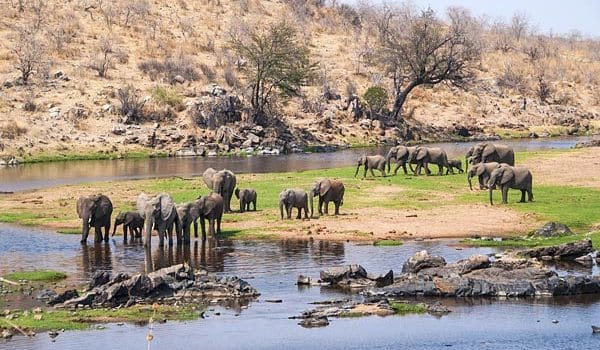
3 Days Ruaha Budget Safari
From US $ 650 per person sharing
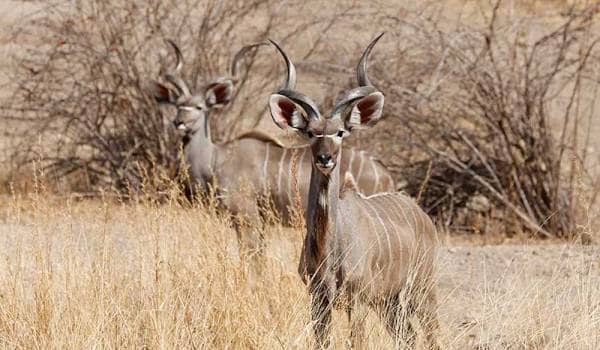
3 Days Ruaha Safari from Dar
From US $ 1990 per person sharing
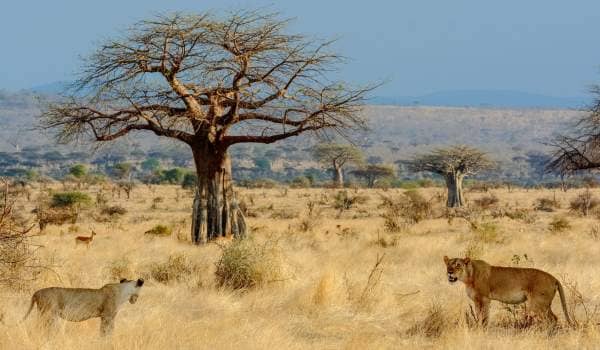
5 Days Mikumi and Ruaha Safari
From US $ 1090 per person sharing

10 Days Luxury Honeymoon Ruaha & Fanjove Island Mafia
From US $ 8200 per person sharing
Attractions
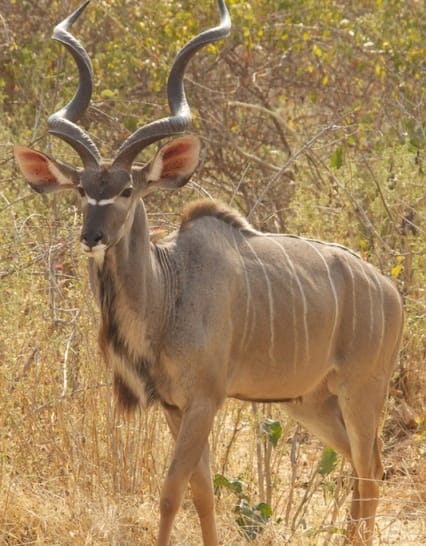
Animals: One of the special attractions in Ruaha national park are the lesser and Greater Kudu. Visitors may also see Sable and Roan antelopes, Lichtenstein’s Hartebeest, Topi, both Southern and Bohor reedbuck and it is the southernmost limit of Grants Gazelle.
Although sighting of Sable, Roan and Hartebeest is common along the higher escarpment, known as miombo woodland, however it is possible to find them during dry season in other spots, such as Makinde Springs and towards Lunda. Topi, on the hand, are exclusively found in the Usangu wetland plains.
In addition to this, Ruaha National Park boast a healthy population of Wild Dogs, Leopard, Lions, Cheetah, Buffalo and Elephant, not to mention all the other species of which there are plenty.
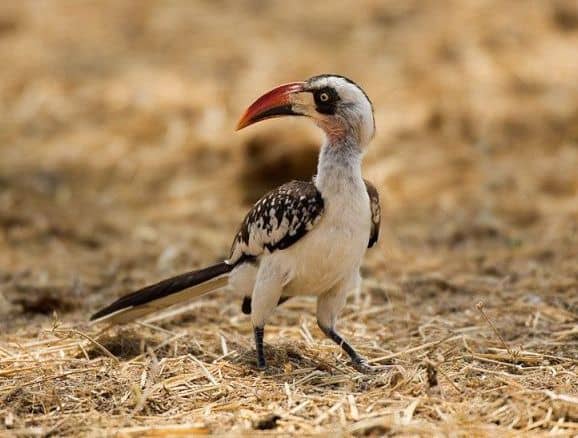
Birds: With 574 species recorded in Ruaha national park, it is difficult to visit this beautiful park and not be impressed by the number and variety of birds you see! The great cross-section of vegetation types and altitude help to contribute towards this. The Ruaha Red-billed Hornbill, and the Ruaha Chat, were first observed here in Ruaha National park and named accordingly. Though it is now known that these two species are common in areas west of Ruaha. Also the geographical location of Ruaha National Park ensure it is visited by both southern and northern migrants. At any time of the year the abundance of bird life is something that cannot be ignored by those who are not particularly interested in avifauna!
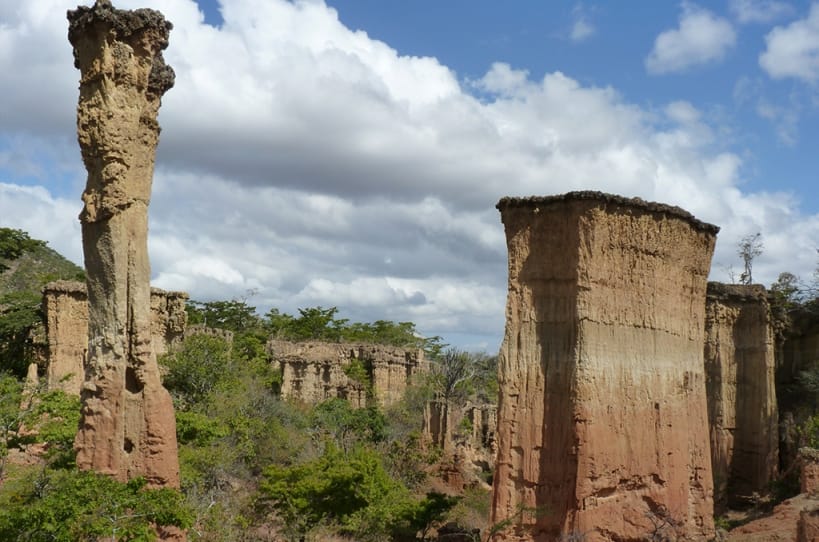
Cultural Sites: The Hehe Chief, Mapenza has his burial site in the park. This is located on the road to Mpululu, though it requires a full day excursion from Msembe to visit this site. It is advisable ti take a guide with you before you go. Historical and cultural sites include: Ganga la Mafunyo, Nyanywa, Chahe and Painting rock.
Other historical sites near park include: Ismila pillars near Iringa town, kalenga, mlambasi, Lugalo and God’s bridge just to mention a few.
Bet Time To Visit Ruaha National Park
Ruaha National Park is accessible all year round, with most visitors arriving in the dry seasons from June to October when grasses are too short for the animals to hide. Different herds of animals tend to congregates around the remaining water sources and along the beds of dry rivers. Large herds of buffaloes and elephants, troops of baboons, dozens of antelopes and predators such as lions and hyenas, as well as smaller mammals can be spotted.
The dry season is also the best for Safari in Ruaha National Park since the weather is cooler and there are fewer mosquitos compared to the wet season.
The wet season in Ruaha National Park comprises of the short rainy which is from November to February and long rainy season runs from March to May. During the short rainy season the rains are not too heavy and grass are still short which makes game drives possible. In March to April the rains are heavy and all the dry rivers become full and grasses become tall which make impossible to sighting animals. Most areas of the park are not accessible during this time and most lodges and camps are closed until early June which is the beginning of the dry season.
How to get to Ruaha National Park?
If you plan to go on safari in Ruaha national park the following ways can be used to reach there.
By Flight: For visitors from abroad can board flights to Dar es Salaam International Airport and connect a domestic flight to Nduli Airport in Iringa town where we will pick you and drive to Ruaha National park. There are also chartered and scheduled light air craft which operates between Ruaha national park and Dar es Salaam and other destinations within the country.
By Road: Visitors who prefer to go to Ruaha Safari by road; there is a paved road from Dar es Salaam to Iringa town which is the nearest town to Ruaha National Park. From Iringa will follow the dirty road for about 2 to 3 hours to Ruaha National park to make the total of 10 hours journey from Dar es Salaam.
To reduce the long driving distance from Dar es Salaam you can then combine Ruaha Mikumi national park which is located about 300 km (5 hrs) drive from Dar es salaam along Mbeya highway.
